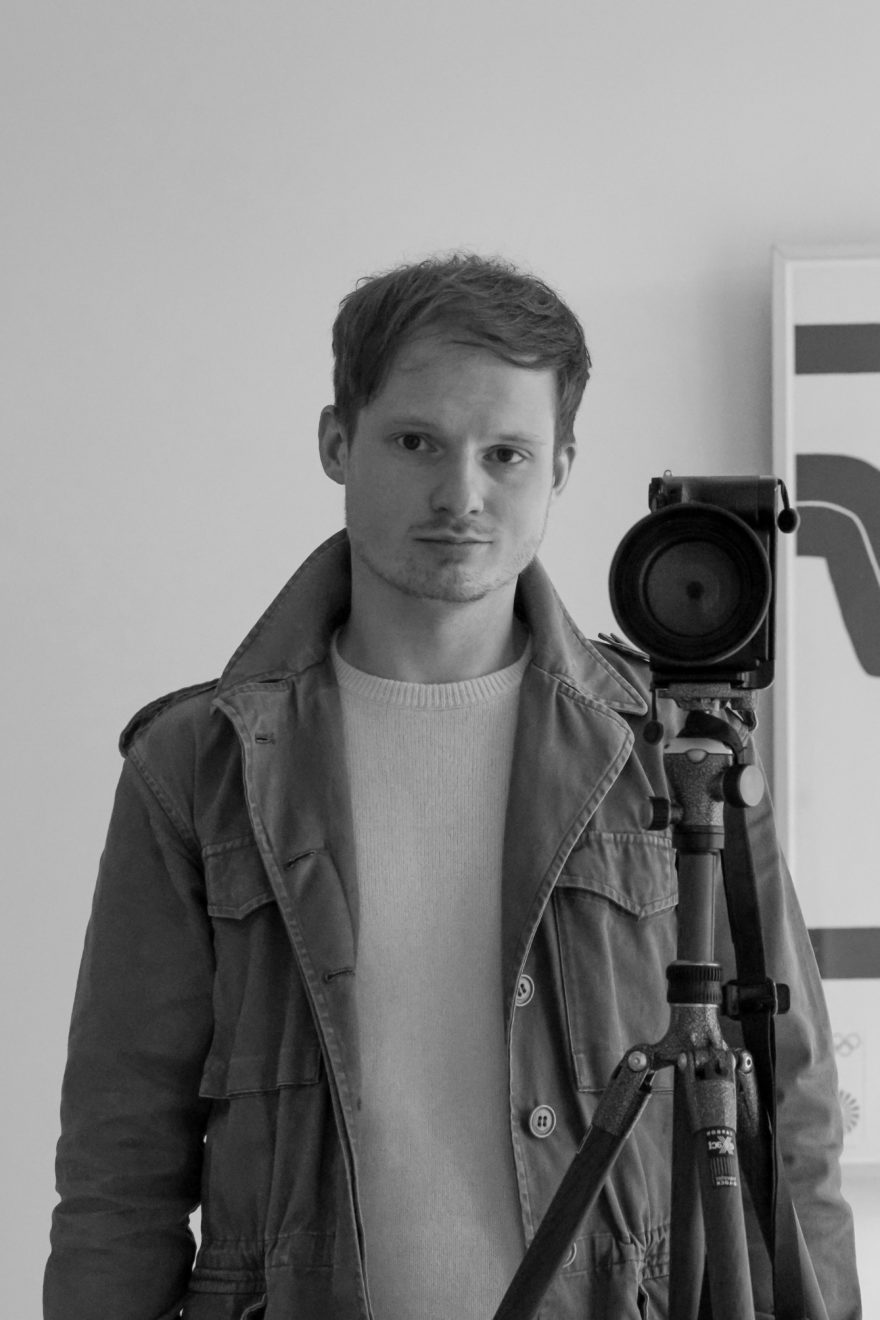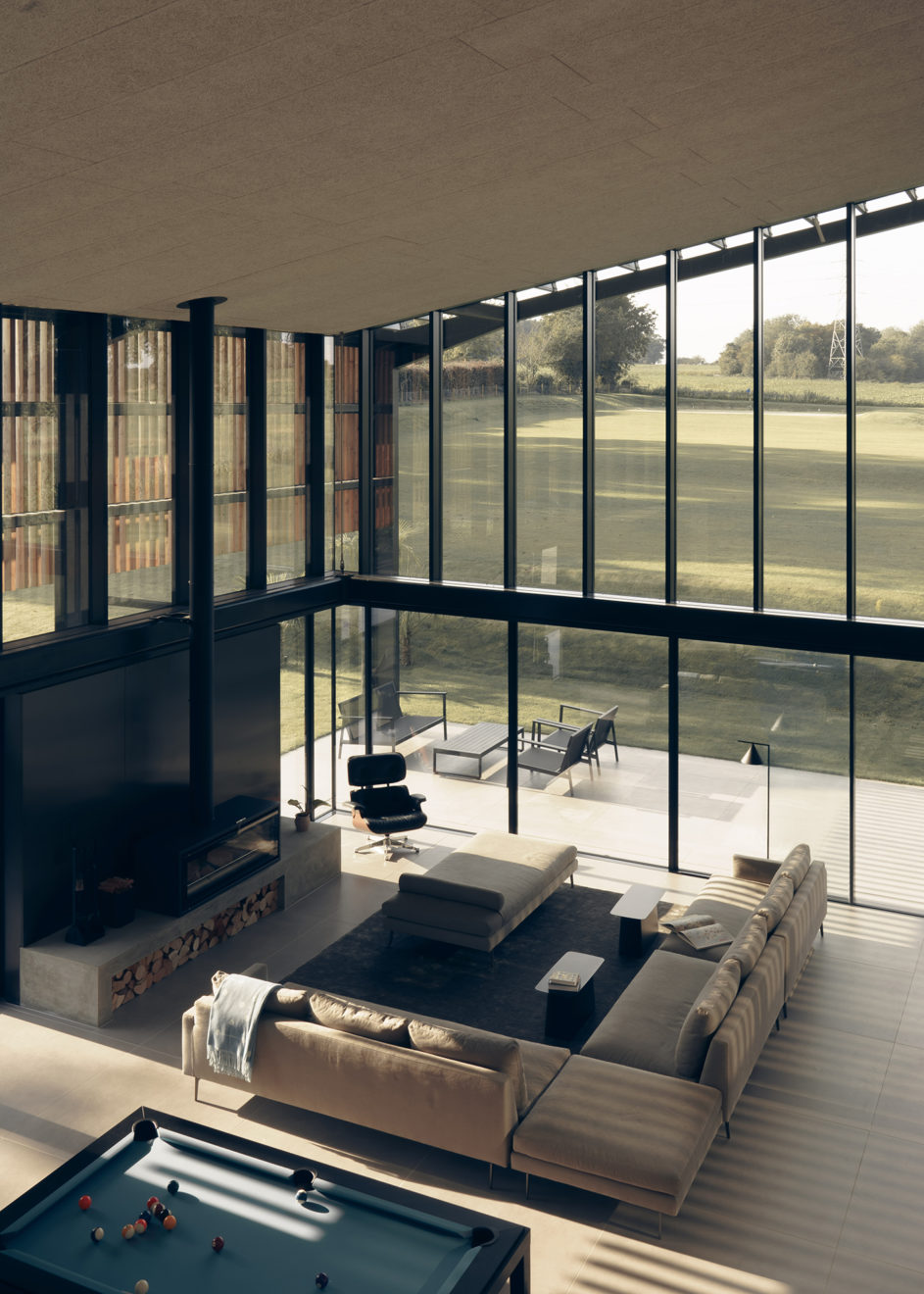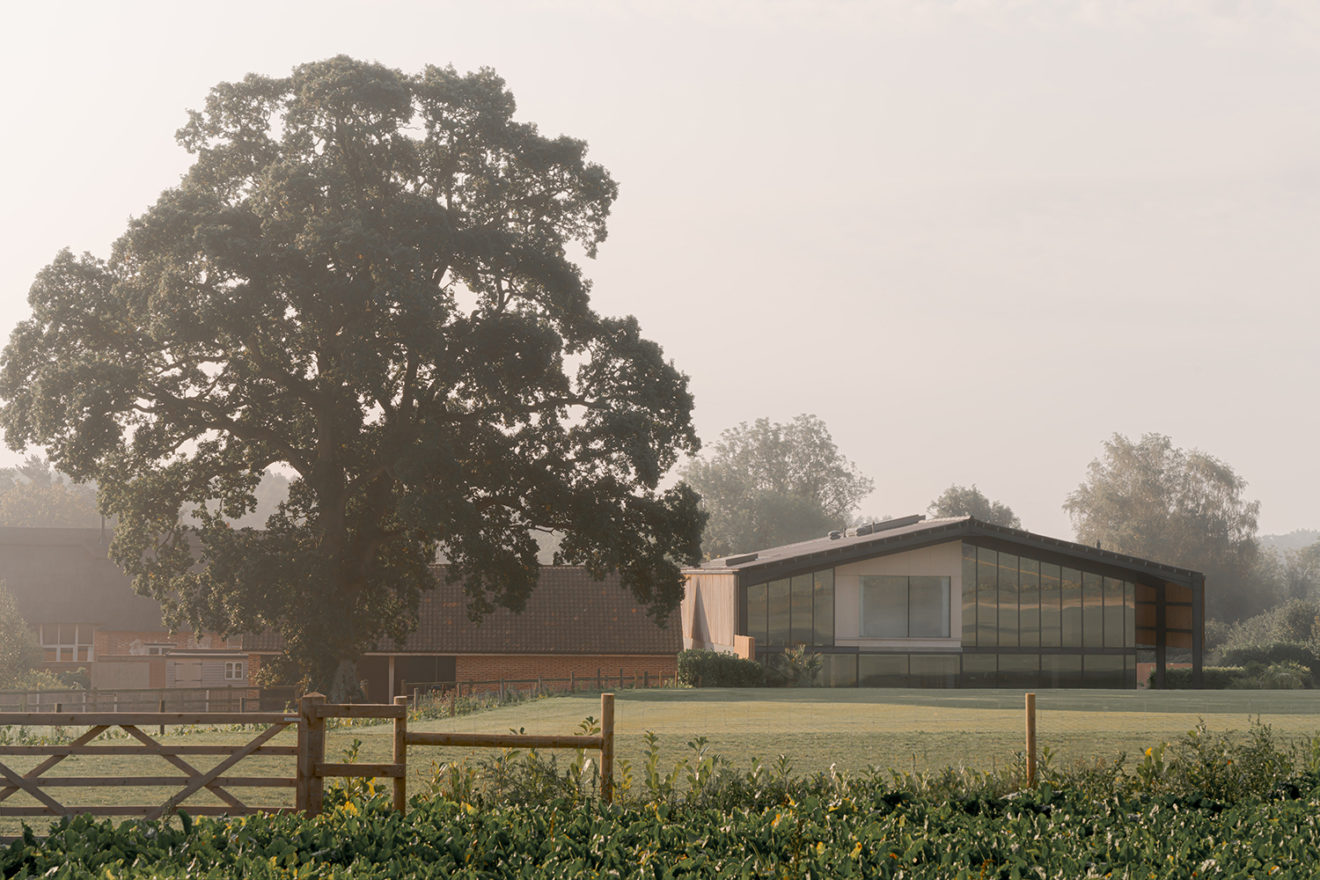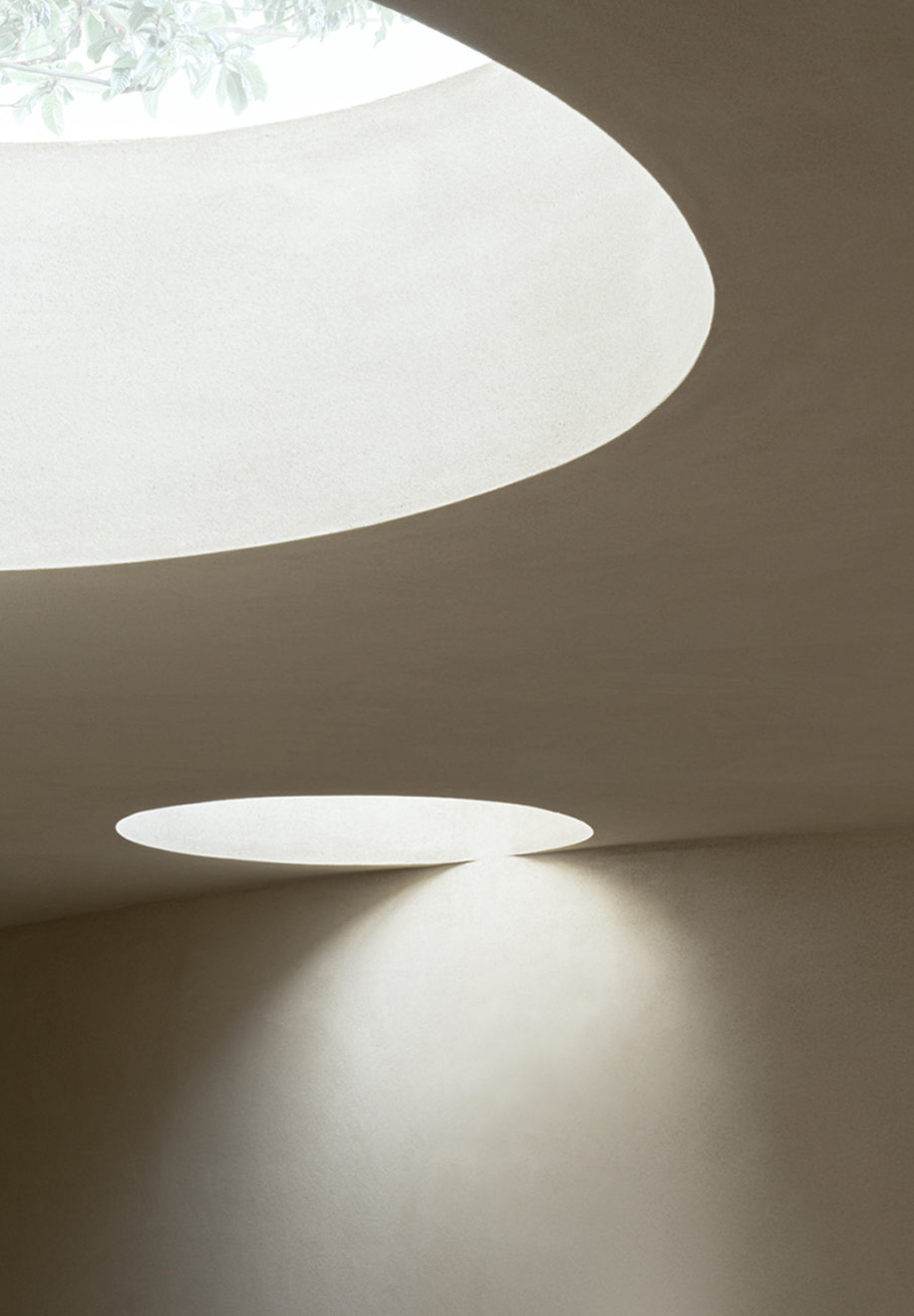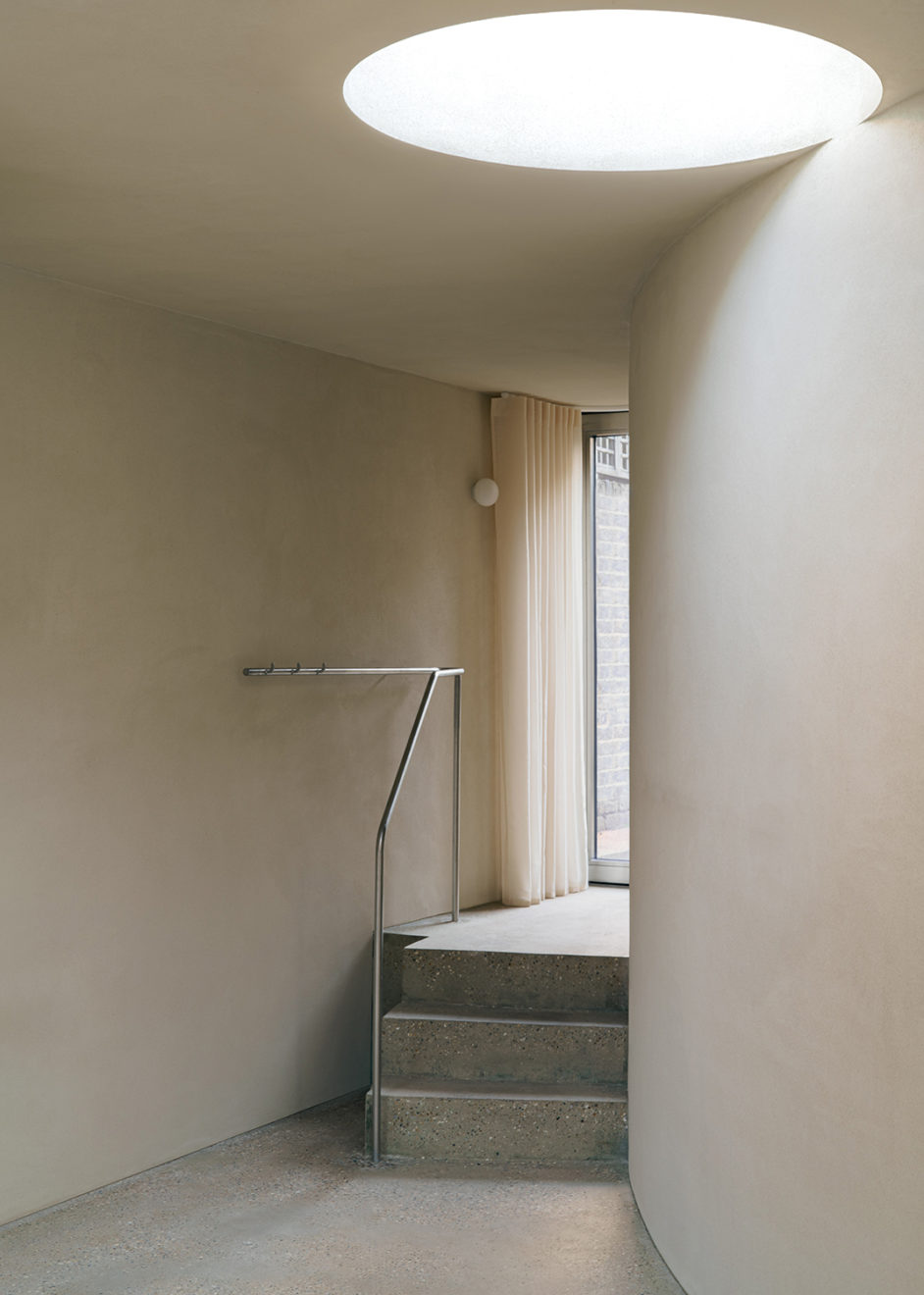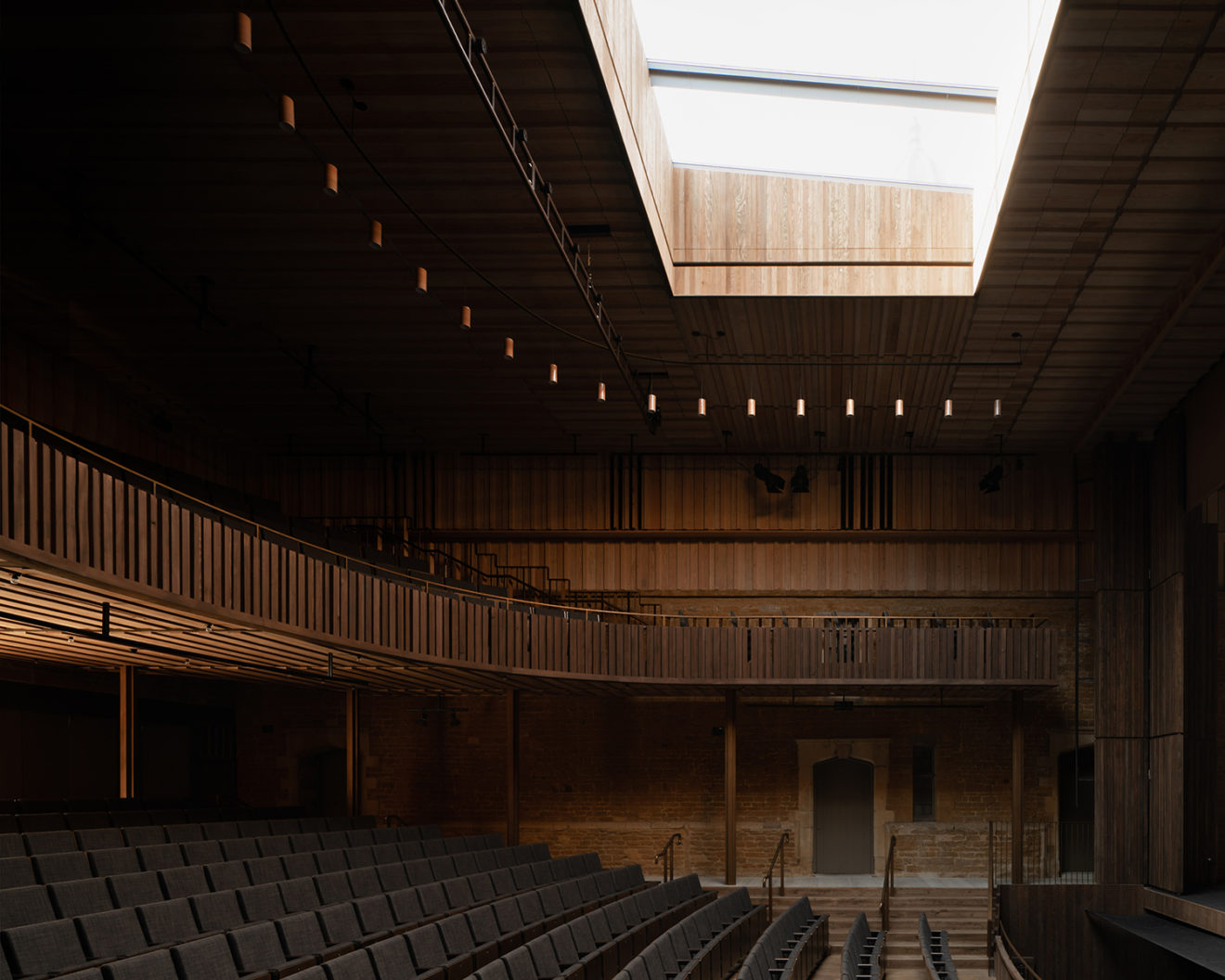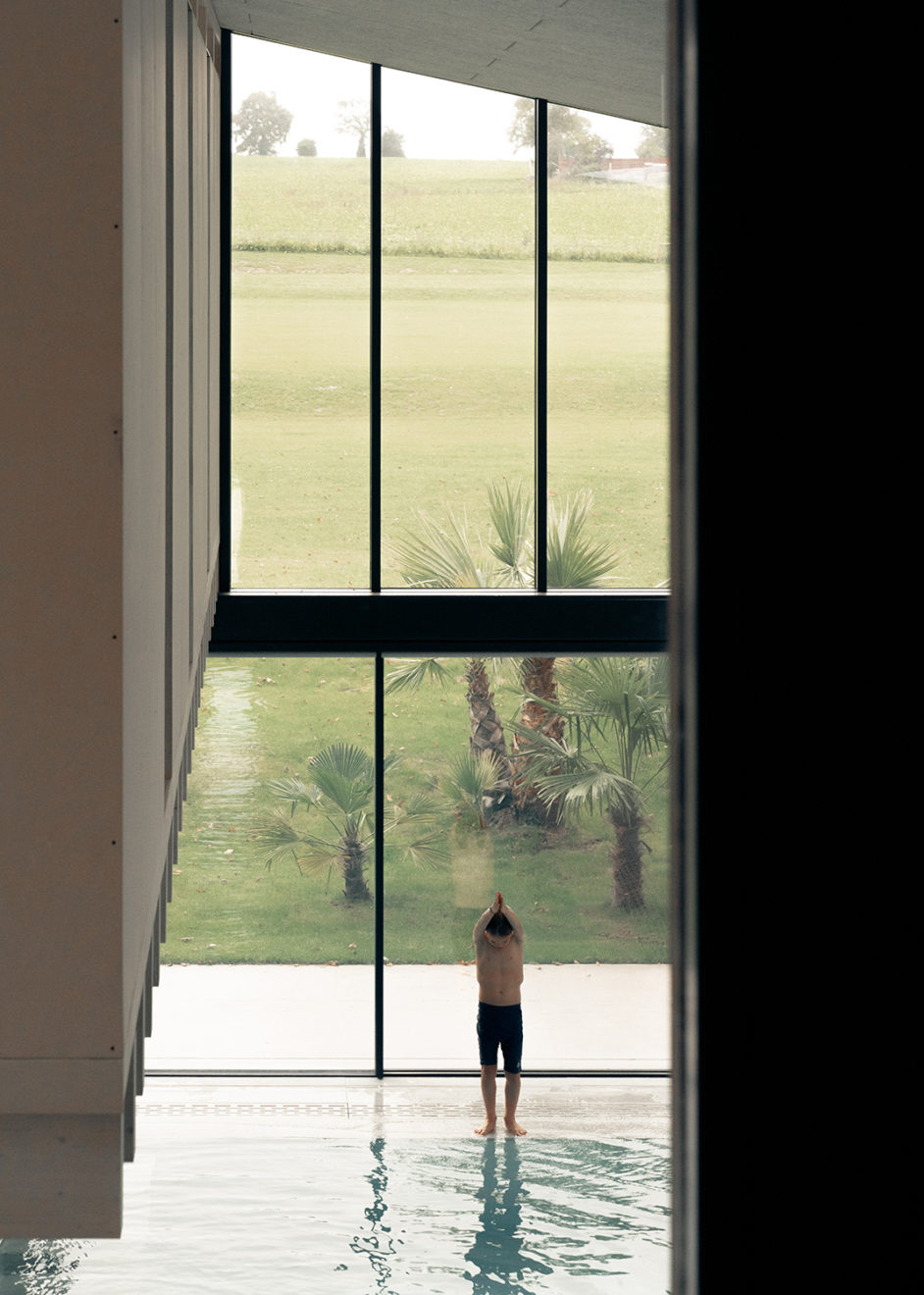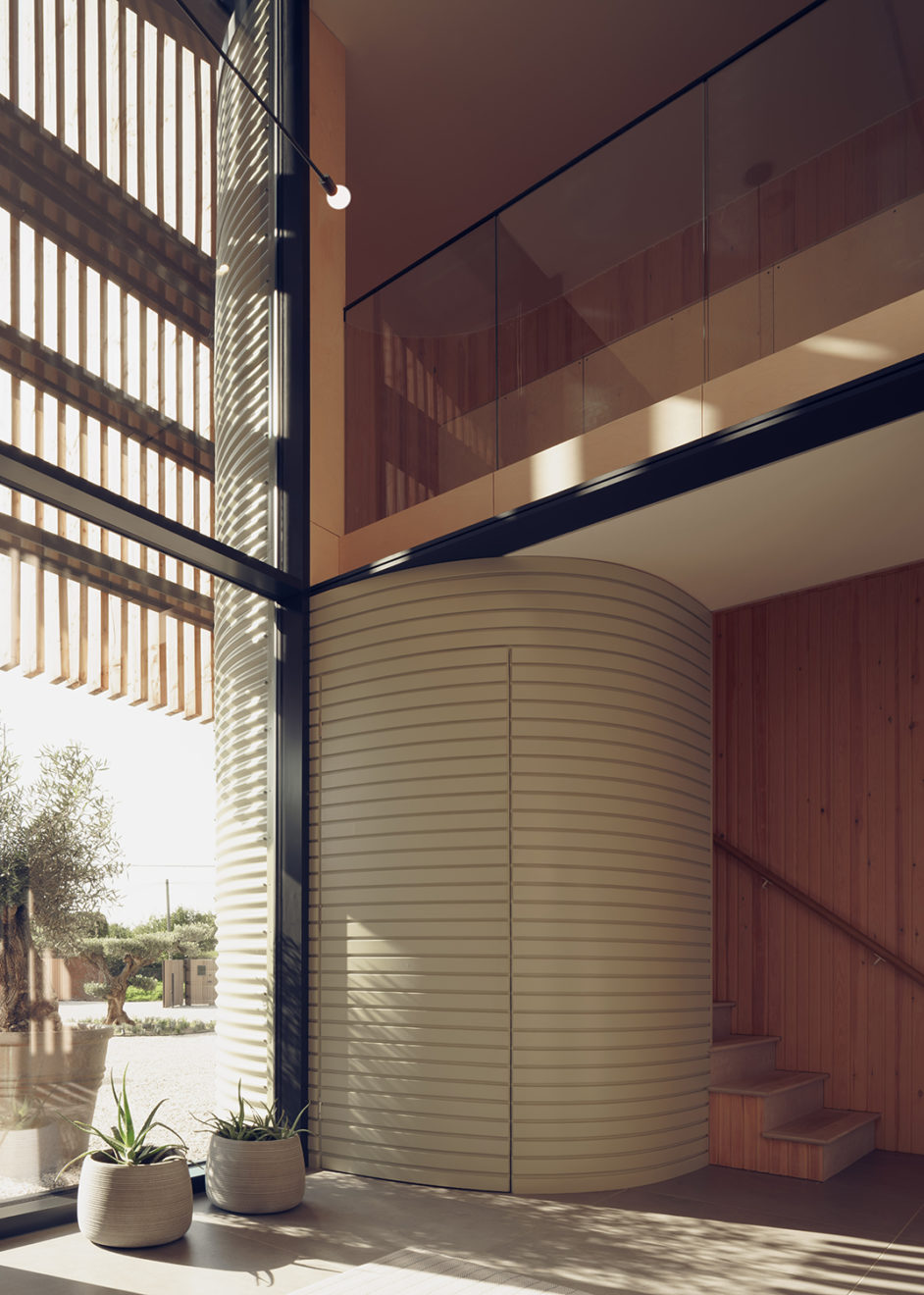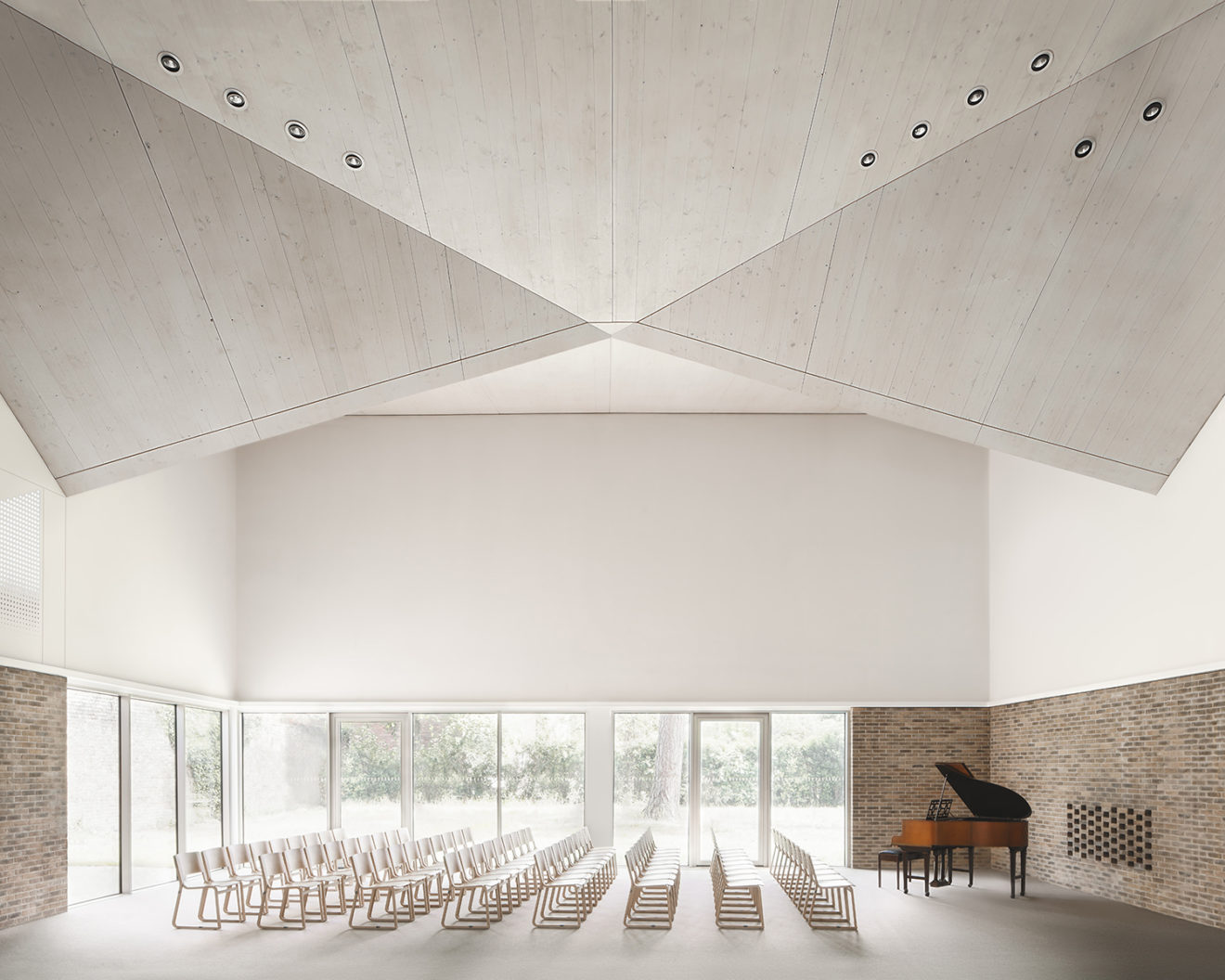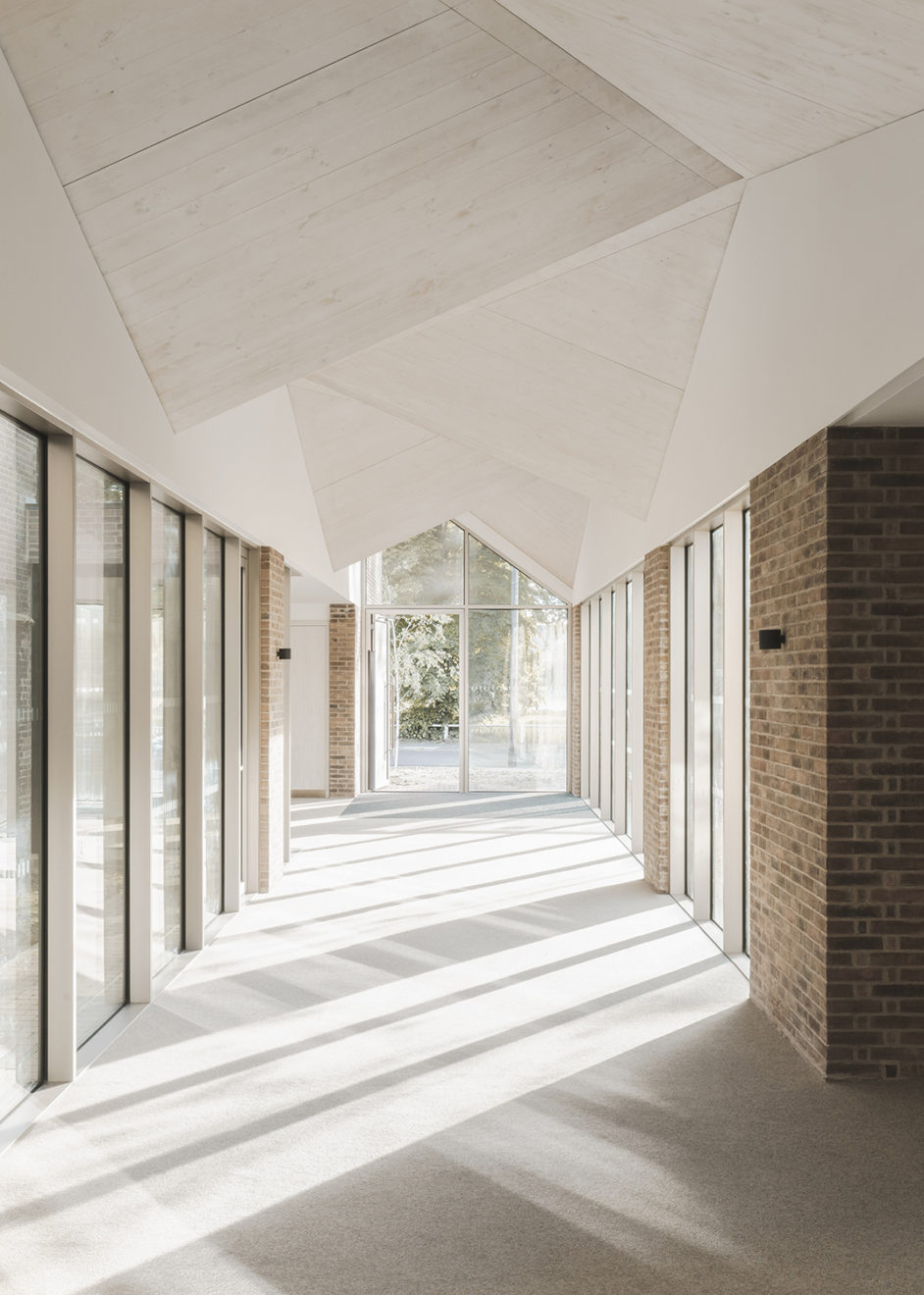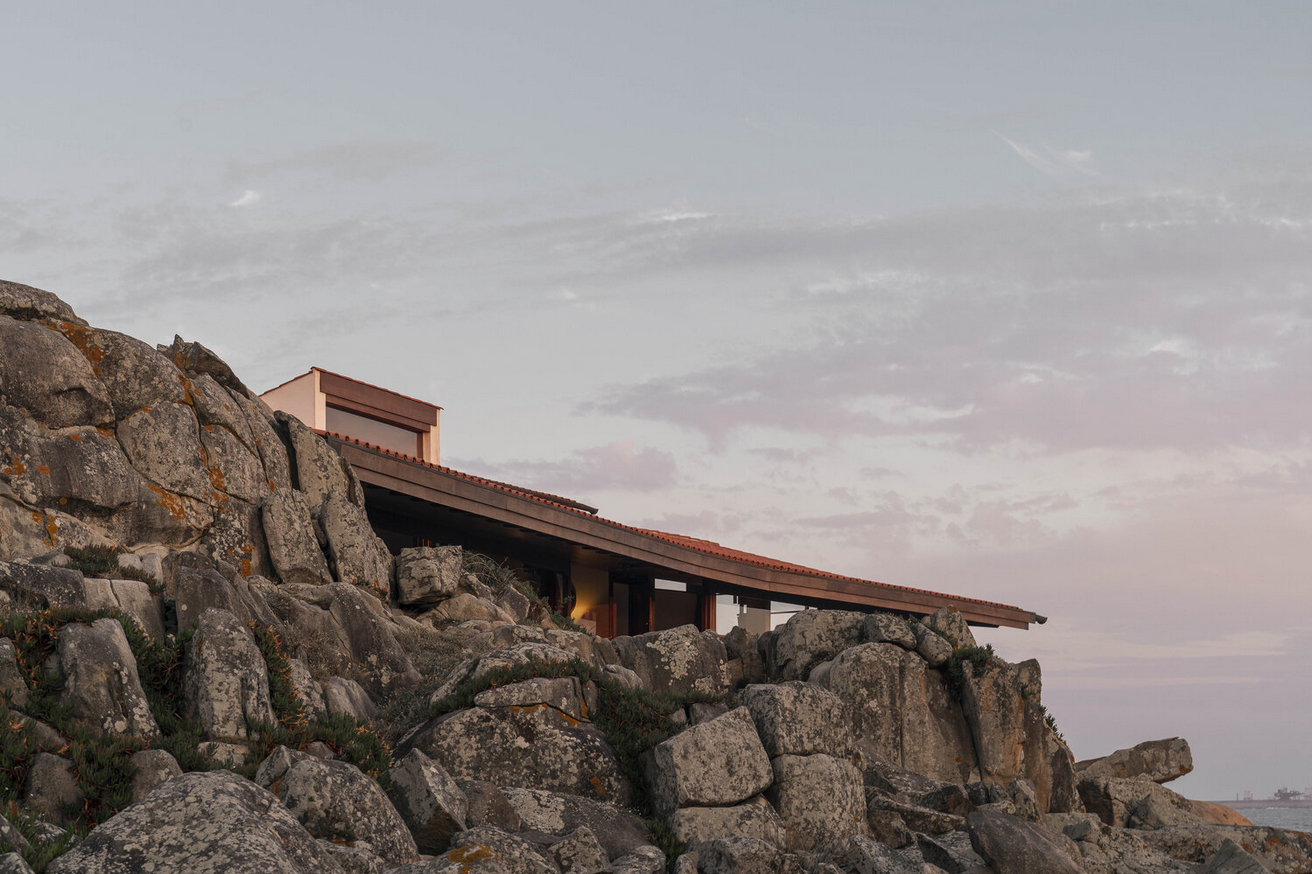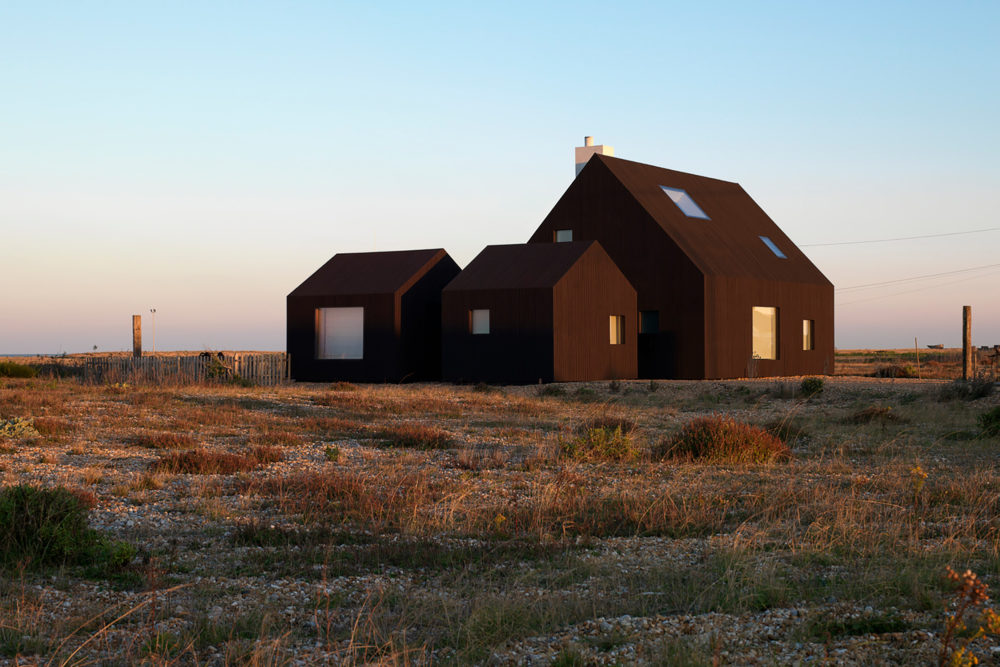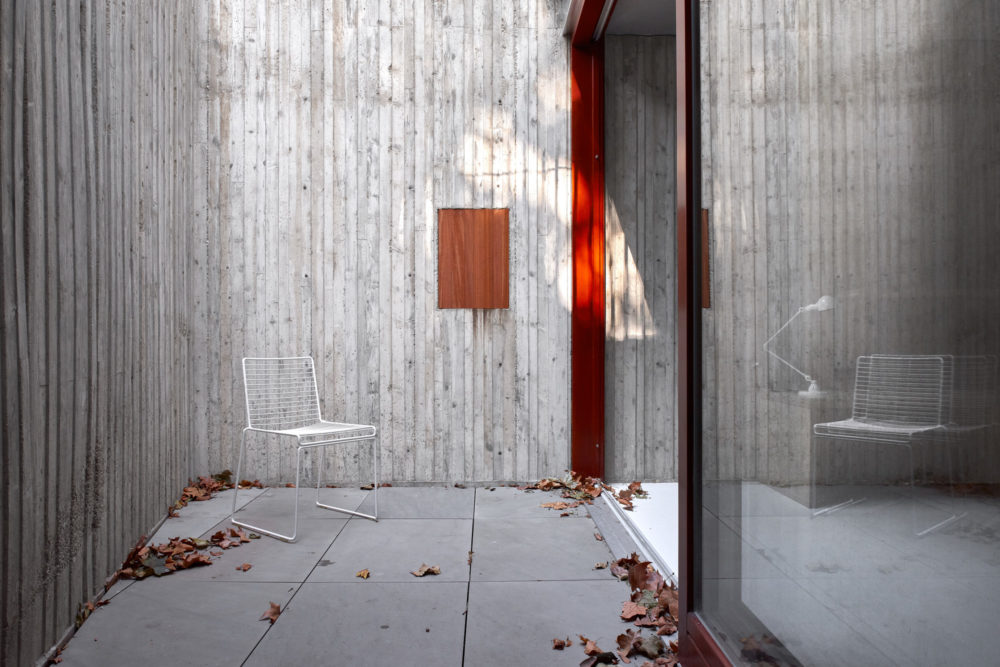Nick Dearden
Nick Dearden was pursuing a career in architecture before some formative experiences compelled him to adjust course to architectural photography. Aucoot chat to Nick about how his architectural background informs his work today, the buildings which played a pivotal role in his decision to pursue photography and the profound importance of natural light in his work.
I would never have considered photography as a proper career path if I hadn’t gone to study architecture at university. I was very academic at school and photography just wasn’t something I even considered. But as an architecture student, we were encouraged to develop a close observational eye and interrogate existing architecture by sketching it. I soon started relying on a camera as a way of critiquing and documenting buildings. Pouring endlessly through architectural monographs in the library also had a part to play. One book in particular was a very battered copy of Peter Zumthor Works which had the most beautiful, atmospheric photographs by Hélène Binet, many in black and white. For my third year dissertation I wrote an analysis of Kenneth Frampton’s Critical Regionalism theory using the work of Álvaro Siza as a lens. I took an eleventh-hour decision to fly to Porto and visit his buildings in person, and produced a series of black and white images that were heavily inspired by Binet’s. I remember having a bit of an epiphany while taking pictures at the Piscina das Marés, Siza’s famous outdoor swimming pool on the shores of the Atlantic, and thinking that doing this for a living would be pretty cool.
When I graduated I worked for the university’s estates department for about a year. It was a fairly laid back role and it gave me time do some freelance post production work for other architectural photographers on the side. I started doing some work for Marc Goodwin after reading his doctoral thesis Architecture’s Discursive Space: Photography, a discussion on evolution in the perception of buildings in specific relation to photographic images. Marc served as something of a mentor to me when I was first starting to take photography seriously and was wondering how to get started. He wrote some very generous feedback on my work and some advice going forward that I’ve kept and think back to often – “Work at inventing something. What is missing from the story of architecture told through images? Identify that. Develop it. Then publish. Do what you love and don’t over-intellectualise it!”
Before I went to university I was convinced that I would become an architect, but during my studies I became aware that I wasn’t a good fit for that career path at all. I graduated through perseverance and sheer obstinacy, but with a growing realisation that I needed to make a course correction.
Later, out of necessity, I found myself working as an architectural assistant. It served as confirmation that photography was what I really ought to be focusing on. Fortunately, my directors were sympathetic, and I spent a good portion of my time updating their reportage of past projects and recently completed ones. Later, when my contract came to an end, they set me up with a couple of freelance photography commissions, which I undertook in January and February 2020. In March, of course, the pandemic hit and we all went into lockdown, which seemed to close the lid on attempting to find another position in architectural practice. Conversely, moving back to live with my parents while I set up as a photographer no longer seemed like such a hardship.
Having not known any alternative as a point of comparison, I’m not sure I can tease apart the two things in order to give an answer. But, hypothetically speaking, let’s say that I arrived at what I’m doing now from a photography degree, for example, I would reason that how I shoot is something that I could have learned on this path. There are books you can buy which teach you conventions of architectural photography and techniques for post production. Equally, I suspect that I would still be able to have meaningful dialogue with architect clients. My taste in architecture, though – my opinion on what constitutes a good building or a bad one, and so ultimately what I choose to shoot – is not something that would have ended up being the same at all.
Perhaps I’m someone that can get easily distracted, because I’m always looking to distill things to their essence and produce images that convey singular ideas. I think that the real world can often be visually noisy and overbearing, so achieving moments of quiet reflection within my work has always felt like a worthy endeavour.
The crux of the matter is that as a photographer in general, I’m primarily interested in beauty, which seems intrinsically linked with simplicity. I would choose beauty over truth any day. Of course, with luck, I get to shoot projects where the two are not mutually exclusive.
Well, the short answer is that I don’t! Winter shoots can be particularly challenging, when the days are shorter and the weather generally much greyer. But I try to be as flexible with shoot dates as I can and make a point of finding out the orientation of the building from the outset of a commission, so I know where the sun will be at different times of the day, which in turn informs what order to capture the spaces in.
I try to shoot interiors with only daylight, so will turn off all artificial light sources, even if the result is that spaces appear dark and I need to compensate with longer exposures. (Spaces with lights that come on automatically drive me up the wall!) I do this because I find that a mixture of natural and artificial light can look very ugly, but mainly because I love the drama created by the contrast between the bright sunlit and dark shadowy extremities of the image. Last year when I had the opportunity to take pictures at Nevill Holt Opera, I took the decision to capture the auditorium with all the lights off and only the natural light coming in from a single, central skylight, something no other photographer had tried. The shoot took place the day before the first lockdown and an event had been due to take place, which of course had to be cancelled. In that context, the space took on a melancholic almost haunting quality, which I think the pictures convey extremely well.
I don’t think there’s a set process. It really comes down to the feeling of a place I get when I arrive. For example, I’m usually quite selective in my inclusion of people in shots, but when I photographed the Piscina das Marés, the series rapidly became entirely about the people – how they inhabited the space and the texture of human skin juxtaposed with harsh surfaces of the rocks and the concrete. That project has a strong itinerant and episodic nature too, and I am really interested in how those aspects of architecture can be conveyed through a sequence of images.
When composing shots, I like the idea that what’s excluded from the frame is filled in by the viewer, allowing new interpretations of that space to develop. Last year I photographed a music composer’s studio designed by Mary Duggan, one of the most abstractly minimal spaces I have ever photographed. It comprised a single room with two sweeping concave walls and two circular skylights. At the client’s request, there were no wide-angle shots, the shoot instead comprised a sequence of quite narrow viewing angles without much discernible overlapping in framing. Although ambiguity wasn’t the intention, I like to think those images could be pieced together in different ways, allowing the space, actually quite simple in plan, the potential to become more than the sum of its parts.
There are lots of photographers whose work I really admire, but to choose just one, at this moment in time, I’d say Rich Stapleton for the consistent style and tonality he brings to a wide range of subject matter from architecture, to fashion, to still life. I once encountered him on shoot – probably four or five years ago now – capturing the Hepworth Wakefield for a Cereal feature. That building has been heavily photographed, but he found some compositions that were completely original, and got some fine images despite the weather that day being extremely hit and miss.
The Casa de Chá da Boa Nova in Portugal by Álvaro Siza, not the first time I visited it as part of my dissertation project, but a second, a couple of years later. It happens to be a very elegant and thoughtful building in just the most staggeringly beautiful location. On that evening the conditions were just about perfect, with the sun setting over the Atlantic and filling the space sidelong with velvety orange light. That feeling of romance and ease was capped by the presence of a large vessel anchored out on the horizon. A colossus come to rest.
I’m taking fewer images than I was a year ago, and delivering smaller sets of images, but of more consistent quality, to clients. I would say that the style hasn’t really changed, but the deviation from the style has gotten smaller. For every days’ shooting I spend at least three or four on post production, so the greatest challenge that I’m trying to overcome at the moment is how to reduce this by changing my workflow to identify and address more mistakes on shoot that I’d otherwise be fixing in Photoshop.
Assuming you’ve figured out how and what you want to shoot, start putting your work online, on Instagram, but particular on a website. It doesn’t take a huge body of work to make something that looks really impressive. Get your own domain name and personalised email address. Clients will want to know that you’re a safe pair of hands, and this is the best way to look like a professional, even if you don’t feel like one and are still suffering from imposter syndrome. Build it, and they won’t come, but you can go to them. Identify the people or companies (best to start small) that you want to work with and reach out to introduce yourself. Don’t be put off if at first you don’t hear back. If you are polite, hardworking and can demonstrate your ability, it won’t be long before someone will give you a shot.
The Way of the Japanese Bath by Mark Edward Harris, for its sensual, atmospheric, ritualistic photographs, and because the book itself is a thing of beauty. Also, The City Beautiful By Martien Mulder for its striking, minimal, ethereal imagery.
Lots more commissions (including a few larger ones), but hopefully some personal projects too, now that travel restrictions are finally easing. After making a close study of the Casa de Chá, I’d really like to shoot Aalto’s Maison Louis Carré, having learned that it was Siza’s key inspiration for his building. I’m also itching to photograph Jørn Utzon’s house in Mallorca and have a go at getting the images published in a travel/lifestyle magazine.

